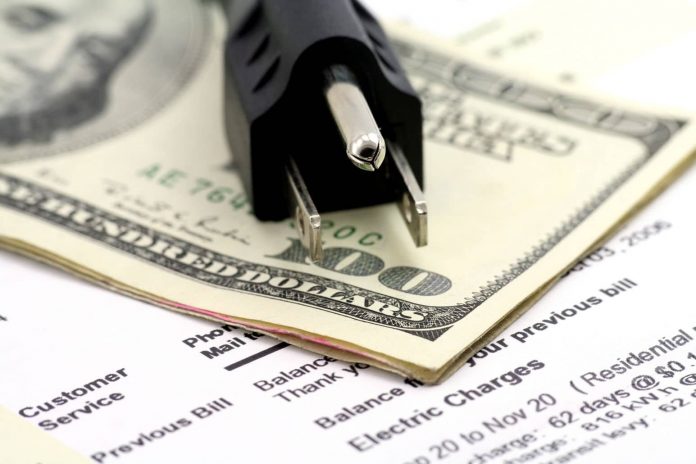
When it comes to energy bills, most of the time, people aren’t happy to deal with them. This expense can be hard to manage. Sadly, when people struggle with this bill, they can see their lights turned off or their gas turned off. This can be especially dangerous during seasons that have extreme weather like snowstorms that come along with winter and heat waves that come along with summer. People that struggle with these bills may benefit from the Low Income Home Energy Assistance Program (LIHEAP).
Low Income Home Energy Assistance Program (LIHEAP)
Sadly, many Americans that may benefit from this program have never heard of it before! However, it is a useful assistance option that can help those in need. LIHEAP is a program that is designed to help low-income families so they can afford home energy services and pay utility bills. It is a federal program thanks to the United States Department of Health and Human Services (HHS). However, it is run at the state level. This means local and state LIHEAP offices will manage the program. Typically, LIHEAP can help with:
- Cooling and heating energy costs.
- Utility bill assistance for low-income families.
- Home repairs
- Emergency support during tough times, like utilities getting turned off.
However, there is a chance that this program can provide additional support. It’s also important to note that generally speaking, LIHEAP will not cover the cost of sewer bills and water bills, but there are exceptions!
Qualifications for LIHEAP?
This program is only designed to help those that are eligible. This includes people in need of help. In fact, an individual may be able to automatically qualify if they are already a recipient of the following support programs:
- Supplemental Security Income (SSI)
- Temporary Assistance for Needy Families (TANF)
- Supplemental Nutrition Assistance Program (SNAP)
Luckily, you don’t need to benefit from the programs above in order to qualify. Some other eligibility criteria include meeting income limits. The income limits are:
- $22,590 for a 1 person household
- $30,660 for a 2 person household
- $38,730 for a 3 person household
- $46,800 for a 4 person household
- $54,870 for a 5 person household
- $62,940 for a 6 person household
- $71,010 for a 7 person household
- $79,080 for an 8 person household
- An additional $8,070 for each person with more than 8 members in a household
However, this is all subject to change. On top of that, you want to make sure you are getting the most up-to-date and relevant information to confirm the income limits with your local LIHEAP agency.
Application Process
Those that want to apply for this program will want to keep in mind that the exact process will depend on the state that they live in which is why it is important to reach out to your local LIHEAP office for details on this program. Besides trying to get in touch with your local LIHEAP office, you may have more luck getting in touch with your state’s office instead.
What Documents Do I Need To Apply?
Luckily, the documents that you will need to apply to LIHEAP are fairly simple and easy to acquire. Some documents that you can expect to provide include the following:
- Proof of identification
- Verification of address
- Your citizenship status
- Social Security number
- Proof of income (this could include tax records or pay stubs)
- Bank statements or financial statements
- Proof of government or private benefits that you currently receive
- Proof of assistance required
Frequently Asked Questions (FAQs)
LIHEAP is a great opportunity that people may have a hard time understanding. It is normal to have plenty of questions.
Can LIHEAP Coverage Handle All of Your Energy Costs?
This program is not designed to provide full coverage of energy costs. Instead, it will focus on covering specific parts of your bill. For example, this program could help with your gas bill but not your electric bill. It will most likely not be able to provide that total level of support!
How Does LIHEAP Make Energy Bills More Affordable?
Weatherization services that are done through LIHEAP can do this. Weatherization refers to energy-related home repairs. These repairs can make the home more energy efficient which reduces energy bills. Some common examples of these repairs include:
- Fixing leaky doors and windows
- Replacing broken or inefficient cooling devices
- Fixing broken or inefficient heating devices
- Installing insulation
- Replacing broken or inefficient heating devices
- Fixing broken or inefficient cooling devices
Alternative Assistance Options to Consider
Other than LIHEAP, there are other assistance opportunities that may be able to provide support. Let’s circle back to when we said there are some programs that may automatically qualify an applicant for LIHEAP. Those programs are also designed to help those in need:
- Supplemental Security Income (SSI)
- Temporary Assistance for Needy Families (TANF)
- Supplemental Nutrition Assistance Program (SNAP)
Supplemental Security Income (SSI)
People that have little to no income and barely any resources may be able to benefit from this program. However, to qualify, the applicant must be at least one of the following:
- Blind
- Disabled
- Elderly
Eligible recipients can get cash assistance that can help them cover the cost of basic needs like shelter, clothing, and more.
Temporary Assistance for Needy Families (TANF)
TANF is a popular program for families looking for cash assistance. The federal government will provide grants to states. States have the ability to use these grants to manage their own version of the TANF program. The goal of TANF is to help families reach economic self-sufficiency. Besides providing cash assistance, this program can also help families work towards that goal with child care assistance, employment assistance, and more.
Supplemental Nutrition Assistance Program (SNAP)
Groceries are another expense that people need to deal with in one way or another. That is why SNAP can be so beneficial. This program provides funds to recipients every month onto an Electronic Benefit Transfer (EBT) card. This card can buy eligible grocery items at stores that accept these cards.
Overall
If you struggle with your utility bills, then you may be able to benefit from LIHEAP. This program is available at the federal level but will vary depending on the state. It can help those in need with:
- Cooling and heating energy costs.
- Utility bill assistance for low-income families.
- Home repairs
- Emergency support during tough times, like utilities getting turned off.
To qualify for LIHEAP, applicants must stay within income limits. However, they may be able to qualify if they are part of these programs:
- Supplemental Security Income (SSI)
- Temporary Assistance for Needy Families (TANF)
- Supplemental Nutrition Assistance Program (SNAP)
To apply for LIHEAP, you will want to reach out to your local LIHEAP office. There are a variety of options to consider when you need assistance. You just need to know where to look!




























